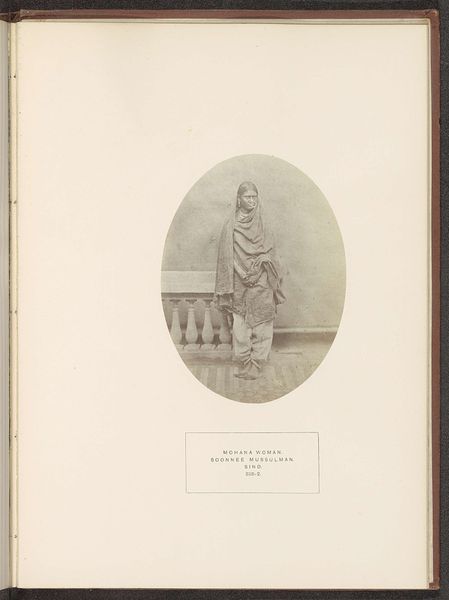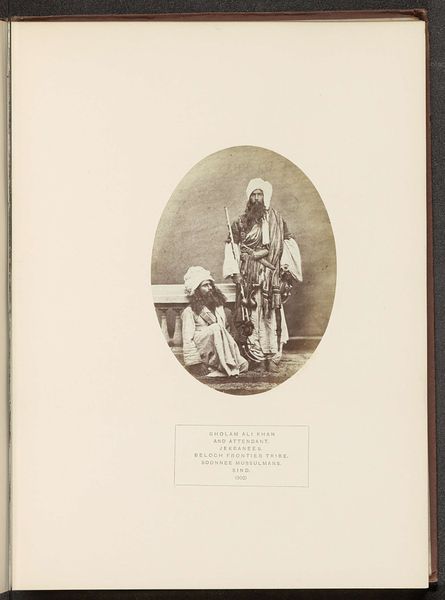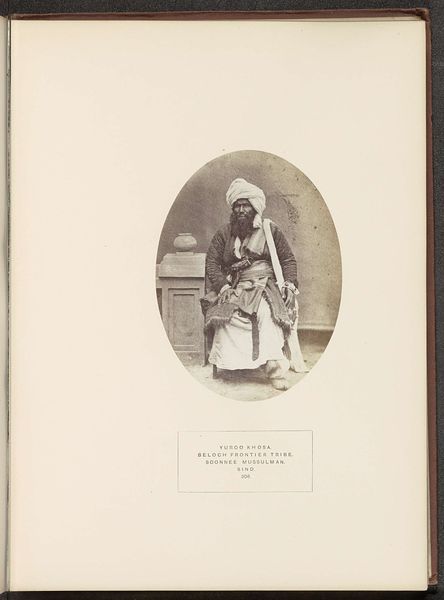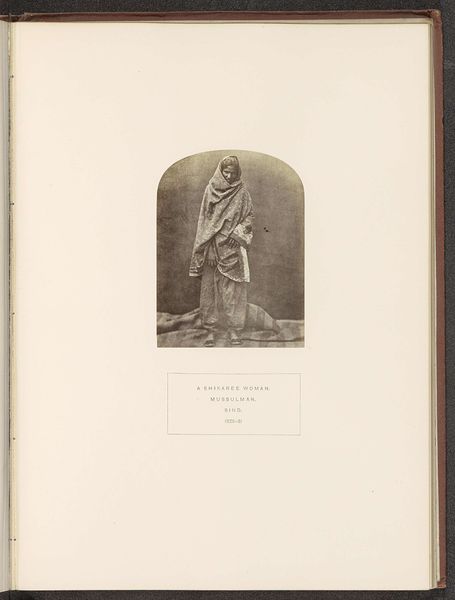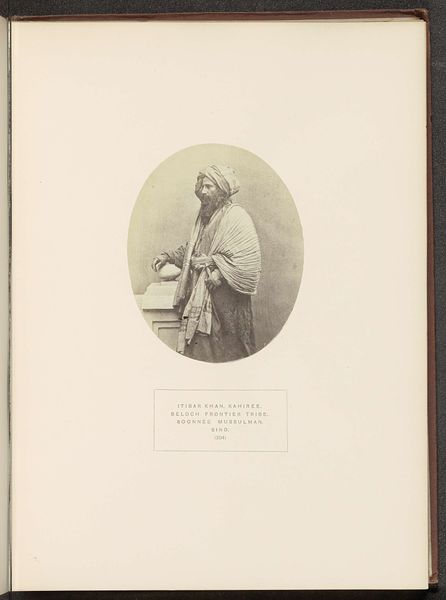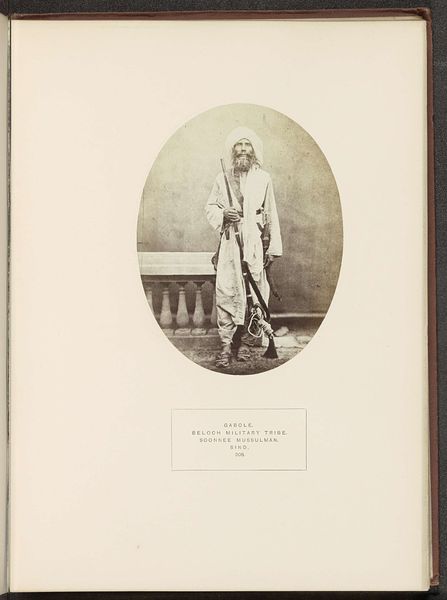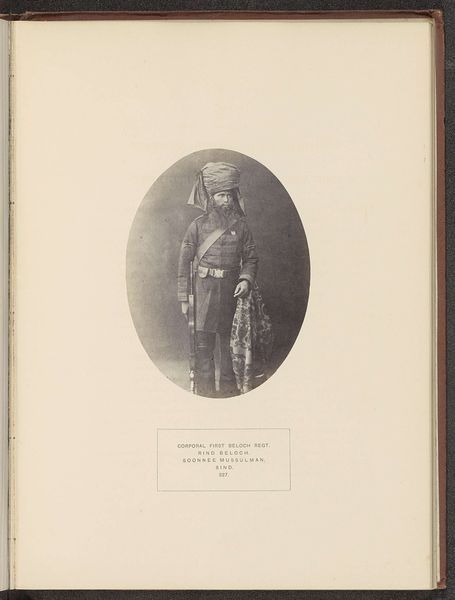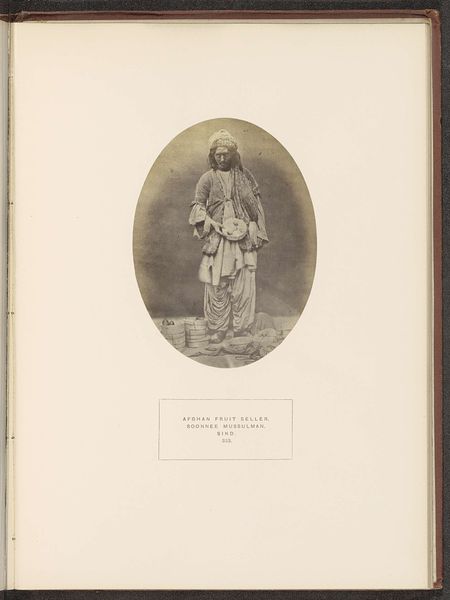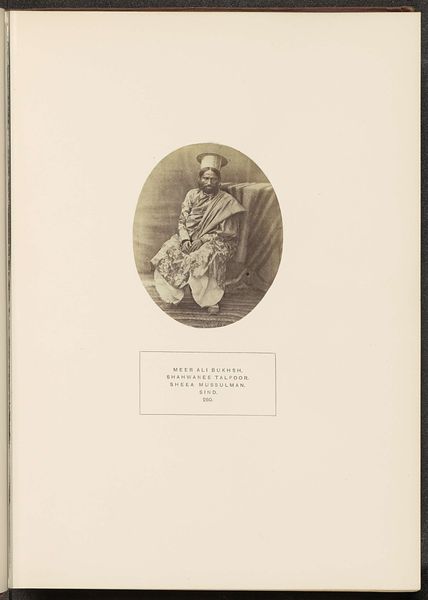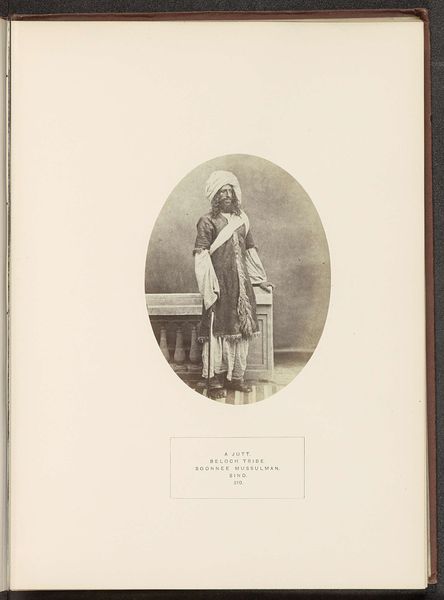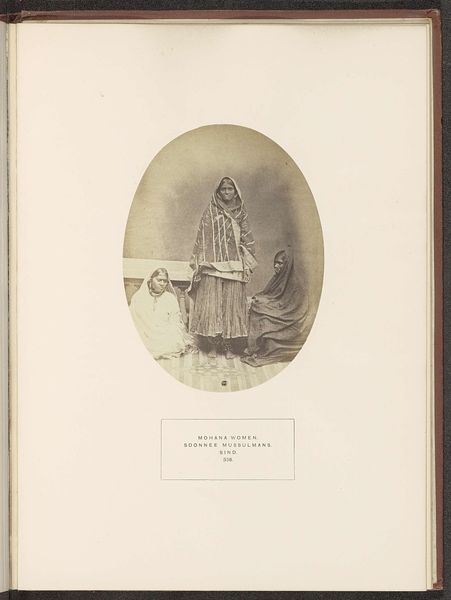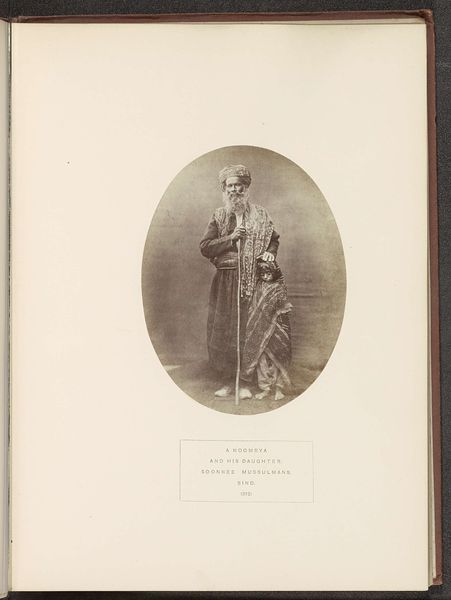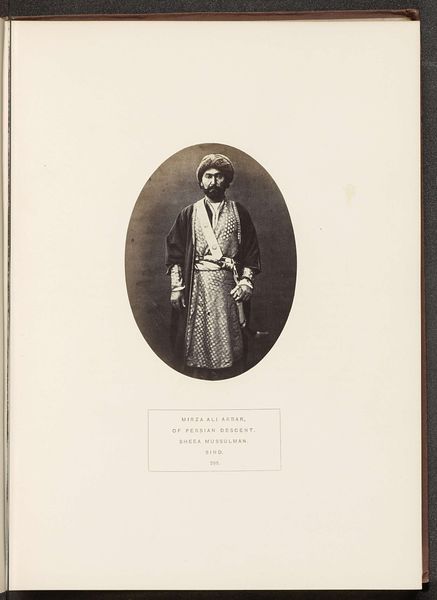
Portret van een onbekende vrouw van een Sindhi-stam before 1872
0:00
0:00
photography, albumen-print
#
portrait
#
photography
#
orientalism
#
albumen-print
Dimensions: height 159 mm, width 120 mm
Copyright: Rijks Museum: Open Domain
Curator: What strikes me first is the vulnerability in her gaze, a quiet invitation almost. Editor: It’s a melancholic beauty captured in this albumen print, "Portret van een onbekende vrouw van een Sindhi-stam," created sometime before 1872 by Henry Charles Baskerville Tanner. What stories do you think adhere to it? Curator: So much is communicated through gesture. The draping of her shawl, the slight tilt of her head...it echoes centuries of representations of feminine modesty and grace, but complicated by the colonial gaze. I mean, look at how "unknown" becomes another layer in understanding. Editor: Exactly, the "unknown woman" becomes a cipher. The work clearly exists within a history of Orientalism, this visual culture where the East is presented and interpreted for Western audiences, raising significant questions about representation and power dynamics. How much are we seeing *her*, and how much is this an outsider's constructed view? Curator: Right, we are looking at an image steeped in socio-political assumptions that affected production and its later perception. We receive visual echoes of that complexity; an attempt to hold onto aspects of her culture, her visible religious attire; a tension as well since Tanner and the British Empire influenced representation throughout Sindh at this time. Editor: You’ve nailed it: cultural preservation clashes with colonial consumption. The photograph freezes a moment, making a woman—an entire people, perhaps—an object of study. How would her community perceive this portrait, if at all? We just don't know. Curator: Indeed. Ultimately, her gaze is all we have now – the symbol endures even without its original story. An emotional residue survives. Editor: Well put. The dialogue it opens up about history, identity and visual narrative is worth holding onto. Curator: It is. Such historical images act as mirrors, throwing light onto both then and now, don’t they? Editor: Precisely, which is why revisiting such artifacts provides rich learning opportunities, regardless of comfort.
Comments
No comments
Be the first to comment and join the conversation on the ultimate creative platform.
